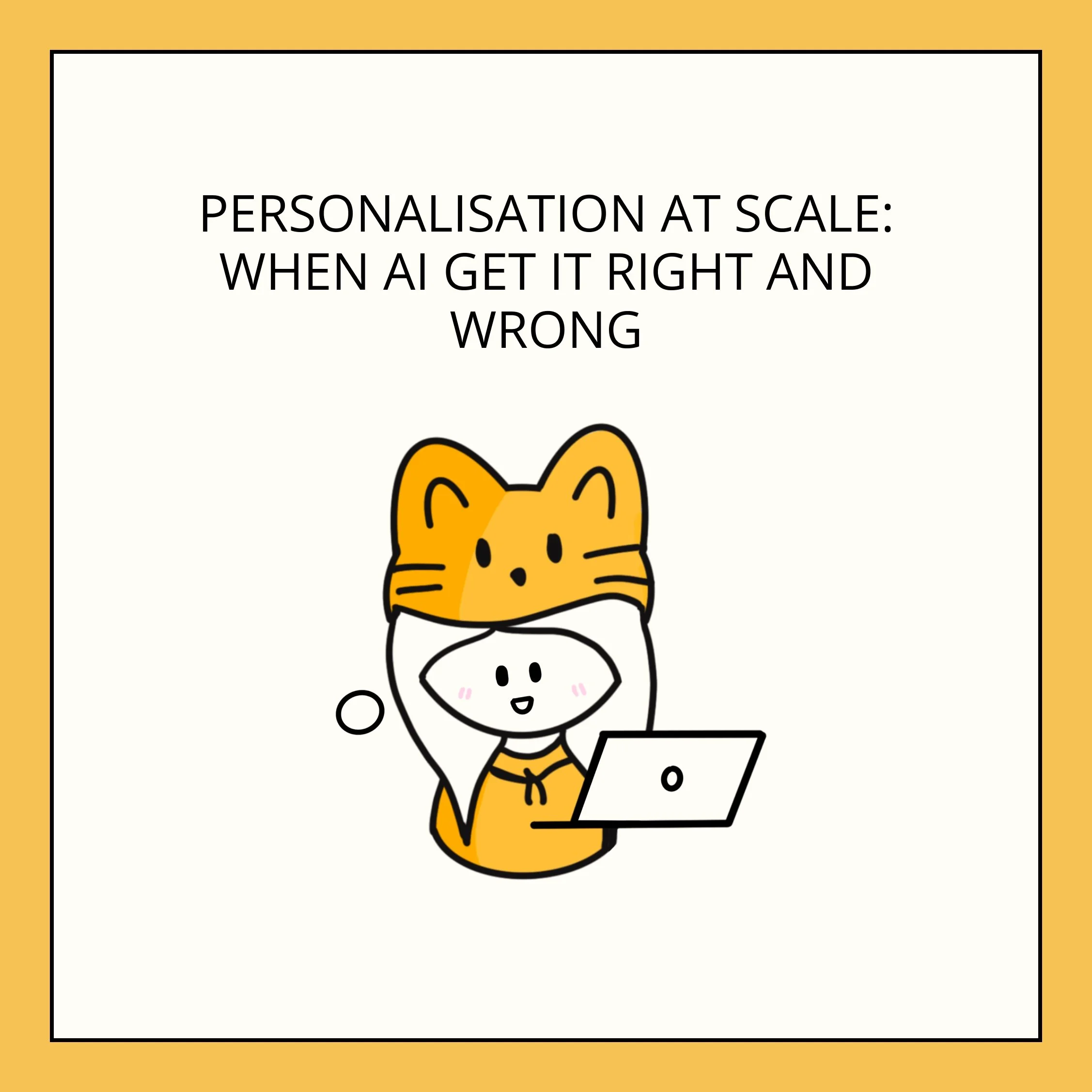Brainstorming Ideas with AI – The Good and The Bad
More than a decade ago, when I first started out in marketing, “brainstorming” looked very different from today. Back then, it was a mix of caffeine-fueled meetings, sticky notes all over the walls, scribbles on the whiteboard and random papers, and the kind of creative chaos where someone would suddenly say: “What if we put a cat, a ninja, and a vending machine together?” And somehow, that random mash-up could spark the seed of a campaign.
The magic was in the randomness, the cultural references we pulled from TV shows, music, and memes, and the way our team could bounce off each other’s energy. It wasn’t always polished, but it felt human. It felt alive.
Fast forward to now, an AI colleague has stepped into the room. Instead of scribbling “alien + bubble tea + dating app” on a whiteboard, I can type a prompt into ChatGPT and instantly get a dozen campaign directions or visuals. It’s efficient, but it’s also… different.
Pros of Using AI for Brainstorming
Speed & Volume: AI can spit out 50 headline ideas in seconds, while humans might spend an hour or more. And if you are stuck, AI can help you push past the dreaded blank page.
Fresh Connections: AI excels at integrating ideas from diverse domains. You might get an angle you never thought of simply because the algorithm linked “finance + K-pop” in a way that feels surprisingly fresh.
Accessibility: You no longer need a large team in a room. A solo marketer can tap AI for instant brainstorming, which levels the playing field.
Cons of Using AI for Brainstorming
Not Always “In Trend”: Culture moves fast, and AI often lags. The latest meme, TikTok sound, or viral slang may not even be registered in its database. That “edgy” campaign idea could actually come across as out of touch.
Cultural Appropriateness: AI doesn’t fully grasp nuance. A joke, character, or visual that works in one culture might fall flat—or worse, be offensive—in another.
Loss of Human Quirkiness: Remember the cat-ninja-vending-machine idea? AI isn’t good at those left-field, slightly ridiculous sparks that come from lived experiences and shared laughter.
My Take: The Blend Matters
I don’t see AI as a replacement for the messy, human side of brainstorming. Most of the time, AI-generated ideas feel scripted and lack that human touch. I think of it more like adding another teammate, one who works fast but doesn’t always get the inside joke.
Back then, our ideas came from observing how people lived, laughed, and complained. Today, AI can help accelerate that process, but the essence of an idea that truly resonates, evoking nods, smiles, or shares, is still very much a human quality.
The real magic happens when we use AI as a starting point and then layer in our lived experiences, sprinkling in a bit of randomness to make it truly resonate.
✨ Takeaway for Marketers
Use AI to expand your brainstorming, not to replace it. Let it be your springboard, but keep your human filter strong. The best campaigns will always need both speed and soul.
Here are 5 prompts to kickstart your next campaign:
1. Trending Meme + Brand Values:
I want to create a [platform] campaign that combines a trending meme or viral topic with my brand values. The target audience is [demographics & interests]. The brand voice is [tone]. The goal is [awareness, engagement, or conversions]. Highlight [key features or messages]. Avoid anything too [technical/jargon-heavy], but it can be slightly playful.
2. Unusual Product Feature Ideas:
Suggest 10 unusual and creative ways to showcase [product/service] features for [platform]. The target audience is [demographics & interests]. The brand voice is [tone]. The campaign goal is [awareness, engagement, conversions]. Ideas should feel human and relatable, avoiding clichés or overly technical approaches.
3. Fresh Social Media Posts:
Give 5 fresh social media post ideas for [platform] that feel human and relatable. The target audience is [demographics & interests]. The brand voice is [tone]. The goal is [engagement, sign-ups, or conversions]. Highlight [product/service benefits]. Avoid jargon-heavy content, but content can be slightly playful or quirky.
4. Storylines from Everyday Objects:
Brainstorm 5 story-driven campaign ideas using everyday objects in unexpected ways for [platform]. Target audience: [demographics & interests]. Brand voice: [tone]. Campaign goal: [awareness, engagement, or conversions]. Highlight [product/service features]. Ensure stories are culturally appropriate and resonate with the audience.
5. Interactive Campaign Ideas:
Brainstorm 5 interactive campaign ideas for [platform] that encourage audience participation. Target audience: [demographics & interests]. Brand voice: [tone]. Goal: [awareness, engagement, or conversions]. Highlight [product/service features]. Avoid anything too technical or complicated, but ideas can be fun, playful, or slightly quirky.
x, Esther



